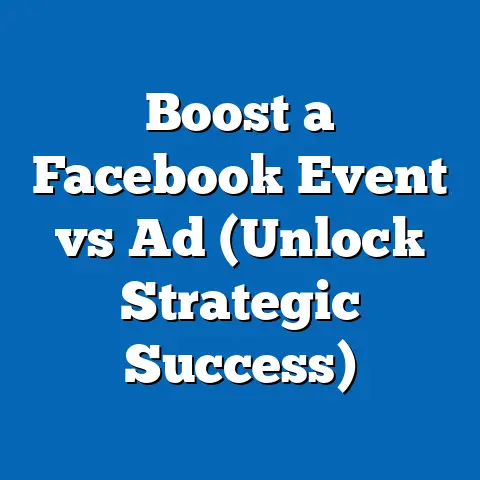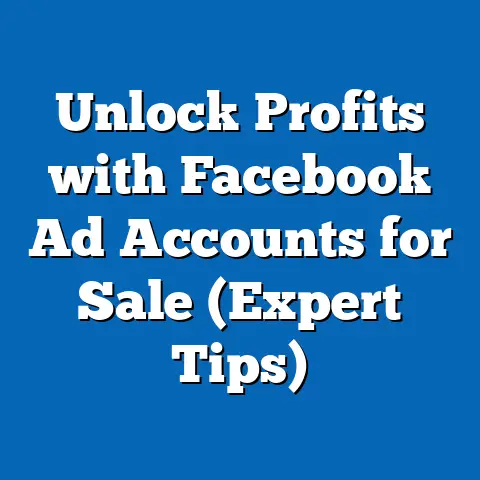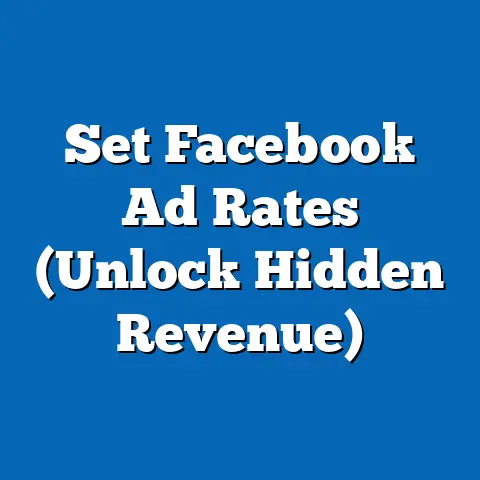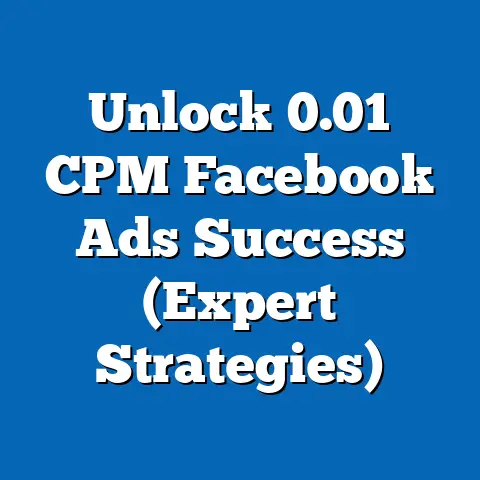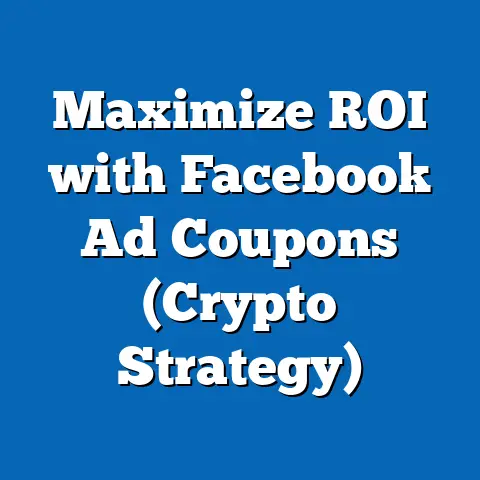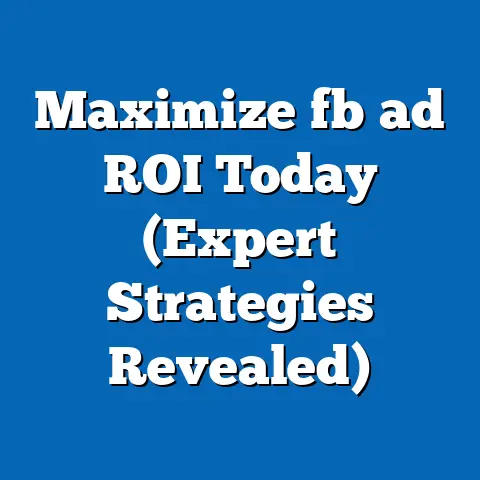Master Ad Tech for Facebook & Instagram (Expert Strategies)
Have you ever launched a Facebook or Instagram ad campaign, held your breath, and watched the numbers… hoping, praying, that this time, it would be different? The thrill of seeing engagement numbers soar, of finally cracking the code to reach your ideal customer – it’s an incredible feeling. But I know that feeling is often overshadowed by the anxiety of pouring your hard-earned resources into a strategy that might just… fail.
I’ve been there. I remember one campaign I ran for a local bakery. We had beautiful images of their pastries, compelling copy highlighting the delicious ingredients, and what I thought was a perfectly targeted audience. Yet, the results were dismal. Low engagement, high costs, and a feeling of utter frustration. It felt like throwing money into a black hole.
The world of Facebook and Instagram advertising can feel overwhelming. The constant algorithm changes, the sheer volume of features, and the pressure to stay ahead of the curve can leave even seasoned marketers feeling lost. But what if I told you there’s a way to navigate these complexities, to transform your advertising game and finally achieve the success you deserve?
That’s exactly what I’m here to share. In this guide, I’ll reveal expert strategies that can help you master the ad tech of Facebook and Instagram, leading you to confidence and remarkable results in your campaigns. Forget the black hole – let’s build a rocket ship to advertising success!
Understanding the Facebook and Instagram Ecosystem
Before diving into the nitty-gritty of ad tech, it’s crucial to understand where Facebook and Instagram fit within the broader digital marketing landscape. They are not just social media platforms; they are powerful advertising engines with unparalleled reach and targeting capabilities.
Facebook, with its billions of users, offers a diverse audience base spanning various demographics, interests, and behaviors. Instagram, on the other hand, tends to skew younger and more visually oriented, making it ideal for brands with strong aesthetic appeal.
According to Statista, Facebook boasts nearly 3 billion active monthly users as of early 2024, while Instagram isn’t far behind with over 2 billion. This sheer volume presents an incredible opportunity for businesses to reach a massive audience, but it also highlights the importance of understanding the nuances of each platform.
One of the key things I’ve learned is that you can’t treat Facebook and Instagram as interchangeable advertising channels. Each platform has its unique features and engagement patterns. For example, Instagram Stories are incredibly popular for short, engaging video content, while Facebook Groups offer a valuable space for building community and fostering deeper connections with your audience. And let’s not forget the power of Messenger for personalized advertising and customer service.
Staying updated with algorithm changes and trends is also vital. Facebook and Instagram are constantly evolving, and what worked yesterday might not work today. Keeping an eye on industry news, attending webinars, and experimenting with new features are essential for optimizing ad performance.
Key Takeaway: Facebook and Instagram are powerful advertising platforms, but understanding their unique features and staying updated with trends is crucial for success.
Crafting Emotionally Resonant Ad Content
Ad tech is important, but it’s only as good as the content it delivers. In my experience, the most successful Facebook and Instagram ads are those that tap into the emotions of the target audience. It’s not enough to simply showcase your product or service; you need to tell a story that resonates with people on a deeper level.
The psychology behind effective ad content is rooted in understanding what motivates your audience. What are their hopes, fears, dreams, and aspirations? How can your product or service help them achieve their goals or overcome their challenges?
Storytelling is a powerful tool for creating emotional connections. Instead of simply stating the features of your product, show how it can transform someone’s life. For example, instead of saying “Our coffee is made with premium beans,” tell a story about the farmer who lovingly cultivates those beans, or the person who starts their day with a cup of your coffee and feels energized and ready to tackle anything.
Visuals also play a crucial role in evoking emotions. Use high-quality images and videos that capture the essence of your brand and tell your story in a compelling way. Pay attention to color palettes, lighting, and composition to create a visual experience that resonates with your target audience.
And don’t forget the call-to-action! Your CTA should be clear, concise, and emotionally driven. Instead of simply saying “Buy Now,” try something like “Transform Your Life Today” or “Join the Community.”
I remember working with a local animal shelter. Instead of just posting pictures of adoptable pets, we created a series of videos telling the stories of these animals – their struggles, their hopes, and their unique personalities. The response was overwhelming. People connected with the animals on an emotional level, and adoption rates soared.
Key Takeaway: Create emotionally resonant ad content by telling stories that connect with your audience on a deeper level. Use compelling visuals, language, and calls-to-action to evoke emotions and drive engagement.
Targeting the Right Audience
Even the most emotionally resonant ad content will fall flat if it’s not seen by the right people. That’s where Facebook and Instagram’s powerful targeting capabilities come into play.
One of the biggest mistakes I see marketers make is using broad targeting. They assume that because their product or service is relevant to a wide range of people, they should target everyone. But this approach is often inefficient and leads to wasted ad spend.
The key is to understand your target audience and segment them into smaller, more specific groups. What are their demographics, interests, behaviors, and online habits? The more you know about your audience, the better you can tailor your ads to their specific needs and desires.
Facebook Audience Insights is a valuable tool for gathering data about your target audience. It allows you to explore their interests, demographics, and behaviors, helping you to create more targeted ad campaigns.
Custom Audiences are another powerful targeting tool. They allow you to upload your own customer data, such as email addresses or phone numbers, and target ads to those specific individuals. This is particularly useful for retargeting ads to re-engage users who have previously interacted with your brand.
Retargeting is a game-changer. Imagine someone visits your website, browses a specific product, but doesn’t make a purchase. With retargeting, you can show them ads for that product on Facebook and Instagram, reminding them of what they are missing. This emotional reminder can often be the push they need to finally make a purchase.
Key Takeaway: Use Facebook and Instagram’s targeting capabilities to reach the right audience with your ads. Segment your audience, use Audience Insights to gather data, and leverage Custom Audiences for retargeting.
Analyzing and Optimizing Ad Performance
Creating emotionally resonant ad content and targeting the right audience are essential, but they’re only half the battle. You also need to track your ad performance and make adjustments based on the data.
Key performance indicators (KPIs) are the metrics you use to measure the success of your ad campaigns. Some common KPIs include:
- Reach: The number of unique people who saw your ad.
- Impressions: The number of times your ad was displayed.
- Engagement: The number of likes, comments, shares, and clicks your ad received.
- Click-Through Rate (CTR): The percentage of people who saw your ad and clicked on it.
- Conversion Rate: The percentage of people who clicked on your ad and completed a desired action, such as making a purchase or filling out a form.
- Cost Per Click (CPC): The average cost you paid for each click on your ad.
- Cost Per Acquisition (CPA): The average cost you paid for each conversion.
Facebook Ads Manager is your go-to tool for gathering insights and analyzing ad performance. It provides a wealth of data about your campaigns, including demographics, interests, and behaviors of the people who are engaging with your ads.
A/B testing is a powerful technique for optimizing your ad creatives, formats, and audiences. It involves creating two or more versions of an ad and testing them against each other to see which one performs better. For example, you could test two different headlines, two different images, or two different targeting options.
Iterative optimization is key. Don’t be afraid to experiment and make changes based on the data. Continuously monitor your ad performance, identify areas for improvement, and make adjustments accordingly.
Key Takeaway: Track your ad performance using KPIs, use Facebook Ads Manager to gather insights, and leverage A/B testing for iterative optimization.
Budgeting and Bidding Strategies
Finally, let’s talk about budgeting and bidding strategies. How much should you spend on your Facebook and Instagram ads, and how should you bid for ad placements?
Facebook and Instagram offer various budgeting options, including daily budgets and lifetime budgets. A daily budget allows you to set a specific amount of money to spend on your ads each day, while a lifetime budget allows you to set a total amount of money to spend over the entire duration of your campaign.
Bidding strategies determine how much you’re willing to pay for each ad placement. Some common bidding strategies include:
- Cost Per Click (CPC): You pay each time someone clicks on your ad.
- Cost Per Impression (CPM): You pay for every 1,000 impressions your ad receives.
- Cost Per Action (CPA): You pay each time someone completes a desired action, such as making a purchase or filling out a form.
Setting clear goals is essential for informing your budgeting decisions. What are you trying to achieve with your ad campaigns? Are you trying to increase brand awareness, drive traffic to your website, or generate leads? Your goals will determine how much you need to spend and which bidding strategies are most appropriate.
Allocating your budget effectively across different ad formats and campaigns is also crucial for maximizing ROI. Don’t put all your eggs in one basket. Experiment with different ad formats, targeting options, and bidding strategies to see what works best for your business.
Key Takeaway: Set clear goals to inform your budgeting decisions, explore different budgeting options and bidding strategies, and allocate your budget effectively across different ad formats and campaigns.
Conclusion
Mastering Facebook and Instagram ad tech is an emotional journey. It’s about more than just understanding the technical aspects of the platforms; it’s about connecting with people on an emotional level, telling stories that resonate, and building relationships that last.
I’ve shared expert strategies that can help you navigate the complexities of Facebook and Instagram advertising, leading you to confidence and remarkable results in your campaigns. But remember, success in advertising is not just about technology; it’s about understanding your audience, crafting compelling content, and continuously optimizing your strategies based on data analysis.
With the right tools, insights, and creativity, you have the power to transform your advertising efforts and achieve remarkable results. So take the first step in mastering your ad strategies today. Experiment, learn, and never stop innovating. Your advertising success story is waiting to be written!

